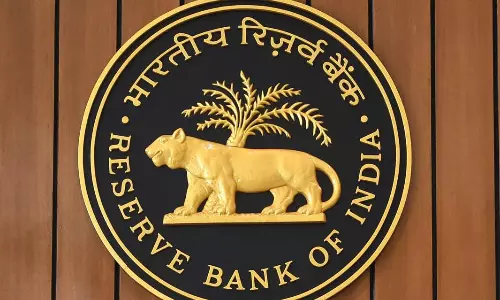
Scientists develop model to predict Indian monsoon in advance
text_fieldsLondon: A team of Swiss scientists has developed a novel prediction approach that can forecast Indian monsoon's yearly onset and withdrawal significantly earlier than from previously available methods.
Based on a network analysis of regional weather data, the team from the Potsdam Institute for Climate Impact Research (PIK) and the University of Zurich will soon propose this approach to the Indian Meteorological Department (IMD).
The summer rains are of vital importance for millions of farmers feeding the subcontinent's population. Future climate change will likely affect monsoon stability and hence makes accurate forecasting even more relevant.
"We can predict the beginning of the Indian monsoon two weeks earlier and the end of it even six weeks earlier than before - which is quite a breakthrough given that for the farmers, every day counts," said lead researcher Veronika Stolbova from PIK and University of Zurich.
"We found that in north Pakistan and the Eastern Ghats, a mountain range close to the Indian Ocean, changes of temperatures and humidity mark a critical transition to monsoon," Stolbova explained. Conventionally, the focus was always on Kerala.
The scientists tested their method with historical monsoon data. It gives correct predictions for onset in more than 70 percent and for withdrawal in more than 80 percent of the considered years.
The main advantage of the proposed approach is that it allows to improve the time horizon of the prediction compared to the methods currently used in India.
In addition, the new scheme notably improves the forecasting of monsoon timing during years affected by the global weather phenomenon El Nino-Southern Oscillation (ENSO), particularly in its La Nina phase.
This phenomenon significantly alters monsoon timing and decreases the prediction accuracy in existing methods.
The major innovation, the authors say, is to combine the network analysis with the subtle statistical analyses of the early warning signals for the monsoon onset and withdrawal.
"These precursor phenomena are often buried by huge piles of weather data and hence get overlooked," noted Elena Surovyatkina of the Russian Academy of Sciences' Space Research Institute.
Global warming due to greenhouse-gas emissions already affects the Indian monsoon and - if unabated - is expected to do even more so in the future.
"We're seeing this in our data and other research also points in this direction," said study co-author Jurgen Kurths, head of PIK's research domain "Transdisciplinary Concepts and Methods".
"The timing of Indian summer monsoon, on which the livelihoods of many million people depend, is likely becoming more erratic. This makes early and accurate forecasting ever more crucial," the authors emphasised.
Information about monsoon timing is key for Indian farmers to determine when to carry out the sowing.
Crops like rice, soybean and cotton are normally grown during the June to September monsoon rainy season.
Even a slight deviation of the monsoon can lead to droughts or floods, causing damages.
Also, the length of the monsoon is relevant for planning hydro-power generation since the rains are necessary to fill the dams and reservoirs.























